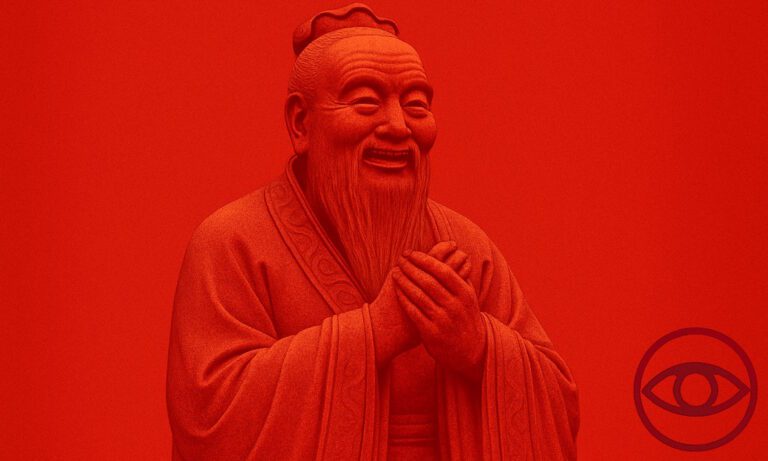
Despite Raisi’s historic visit to China, bilateral ties will continue to face serious challenges. Beijing will remain highly pragmatic toward the Islamic Republic and the Middle East at large, avoiding picking sides.
On February 14, Iranian president Ebrahim Raisi visited China in what was the first state trip in nearly 20 years. The visit came after a diplomatic spat between the two following Chinese president Xi Jinping’s visit to Saudi Arabia in late 2022 when he signed a joint statement with the Gulf Cooperation Council (GCC) on the need to peacefully resolve territorial disputes in the Gulf.
Crucially, the statement went well beyond the islands dispute between Iran and the United Arab Emirates (UAE) and touched upon a far more critical issue of Tehran’s nuclear program, with China calling upon Iran to fully cooperate with the International Atomic Energy Agency (IAEA). In reaction, Tehran summoned the Chinese ambassador but tried to gloss over the scandal with the use of modest diplomatic language.
Raisi’s visit to Beijing, therefore, was meant to overcome the immediate disturbances in the bilateral relations and address the long-term issues such as the plans to increase economic cooperation within the framework of the 25-year investment agreement signed between Beijing and Tehran in 2022. Some 20 agreements on agriculture, mining, and automotive industry were signed in Beijing, though there are few other available details. The reality, however, looks much more complicated – challenges in bilateral ties will persist, hampering the much-touted expansion of economic and trade relations.
Growing Scepticism in Tehran
Over the past years, Tehran has advanced foreign policy built around the idea of finding a common ground with the Eurasian powers – Russia and China. The “Look East” policy was a logical reaction to the stalemate the country has been in with the collective West over its nuclear ambitions and the support for militant groups across the Middle East. Pressure from the West coupled with ambivalent relations with Moscow and often unsatisfactory ties with Beijing further cornered Tehran.
The war in Ukraine, however, presented Iran with an opportunity. It helped the Islamic Republic to fast-track traditionally meandering ties with Russia with similar hopes actively entertained in the case of China.
Yet, if military and economic ties are blossoming with Russia, there is a long list of Iranian concerns toward China. Tehran has been at unease over Beijing’s seeming unwillingness to expand full-scale economic relations. Iranians are especially worried and even angered that the oft-mentioned 25-year comprehensive investment agreement has not brought tangible benefits to Iran as China has largely abstained from doing its part of the deal, namely, investing into Iran’s oil and gas sector and railway and port infrastructure. Even during Raisi’s visit, the value of economic deals (between $3 and $10 billion) signed was dwarfed by what Xi had agreed to in Saudi Arabia (around $50 billion).
Tehran is discontent that the deal mostly focuses on tapping the potential of cultural exchanges and charting a course for long-term cooperation. It does not include any quantitative, specific contracts and goals, and only provides a general framework for China-Iran cooperation going forward. The agreement indicates that much in bilateral relations remains subject to circumstances, which unnerves the Iranian political class. The figures speak for themselves: In 2022, out of total $5.95 billion of investment into Iran, Chinese companies invested only about $185 million.
Iran also recognizes the limits of cooperation with China but expects Beijing to throw support for Tehran at least in international forums such as the UN, the nuclear negotiations and, most of all, hopes for closer cooperation within China-led multilateral organizations.
Thus, given this uneasy development in China-Iran relations, the chief goal of Raisi’s visit was to show to the US and the EU that Iran is not alone, has multiple foreign policy options, and will not be swayed by Western sanctions and demands in the stalled nuclear negotiations. The second goal of Raisi was to mitigate the existing tensions with Beijing. The trip, however, did not produce the expected results as it came down to one simple divergence: China first wants Iran’s cooperation on a nuclear deal to open the door for expanded cooperation, while Tehran wants Beijing to invest first.
Pragmatic China
The Chinese are pragmatic when it comes to Middle East politics and especially to relations with the Islamic Republic. They see that the country is under heavy sanctions and that overall it is a risky market. Chinese companies are simply not willing to threaten their interests and come under American sanctions for their activities in Iran.
Nearly coinciding with Raisi’s trip, the media reported that Sinopec, China’s energy giant, has ceased its operations in Iran’s Yadaravan oil field. Though later denied by the Iranian officials on the ground that the negotiations are still ongoing, the move indicates how sensitive China is to the sanctions imposed on the Islamic Republic. Moreover, this is not the first time Chinese companies are withdrawing from Iran’s gas and oil industry.
Chinese pragmatism is also seen in a nuanced understanding of Iran’s limited choices. Beijing knows the Islamic Republic needs China, especially to balance the pressure from the collective West. And though Tehran harbors no illusions about Beijing’s aspirations in the Middle East and especially the Gulf area, it also cannot allow for a rupture or even a slight downgrade in bilateral ties with China. The problem is that Iran now yearns for more than just rhetorical cooperation on the need to curb the US power in Eurasia. Instead, it is looking for investment and real support on practical matters.
Iran is and will remain an important partner for China and the latter, despite skepticism, will continue its classic approach of not picking favorites among the Middle East powers. It will be increasingly difficult for Beijing to do so in the longer run, but it seems that China will still stick to this uneasy balancing act. Even after Xi’s visit to Saudi Arabia, China opened its consulate in Bandar Abbas and Beijing supported Tehran when it came to the vote against Iran’s expulsion from the UN Commission on the Status of Women. Having suspected the need not to alienate Iran further, Beijing then invited Raisi on a historic visit.
Beijing also knows that it serves as a major lifeline for Iran through oil purchases that have reached $47 billion since 2021. Indeed, the extent of Iran’s dependence on oil revenue is reflected in the recently unveiled state budget for 2023, which largely relies on expected exports of 1.4 million barrels of oil per day at an average price of $85 a barrel.
This takes place simultaneously with Beijing upping its ties with Iran’s strategic rivals in the Gulf region. The reasoning is simple: Saudi Arabia and the Gulf States are economically far more important to China than Iran and have a much larger pool of foreign policy alternatives (US, Russia), which requires Beijing’s more close attention.
Thus, China’s approach to the Islamic Republic (and, it could be argued, toward the Middle East overall) remains highly pragmatic. Beijing is ready to help Iran and could genuinely be willing to advance bilateral ties, but just as long as it does not hurt China’s economic interests.
Written by
Emil Avdaliani
emilavdalianiEmil Avdaliani is a professor of international relations at European University in Tbilisi, Georgia, and a scholar of silk roads.


